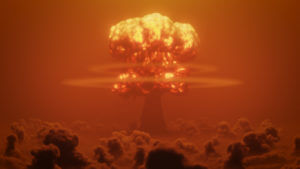
Living near places where nuclear tests happen can be a worry for many people. These areas are affected by radioactive particles from past nuclear tests. They are home to people known as Downwinders. These tests, mostly done in the mid-1900s, have caused serious health problems, especially cancer.
It is important to understand the cancer risks linked to nuclear fallout. This article will explain the common cancer risks from these tests. We will also provide helpful information for those who may be affected, like Downwinders.
The Impact of Nuclear Fallout on Downwinders
Nuclear tests in the air released harmful radioactive materials that spread over large areas. People living in these areas, called fallout zones, were often not told of the dangers. Years later, these exposures have been linked to higher cancer rates. Learning how radioactive materials affect the body helps us understand the health risks faced by Downwinders.
People can be exposed by:
- Breathing in radioactive particles
- Eating contaminated food
- Drinking unsafe water
Once inside the body, these particles release radiation that can harm cells and cause cancer. The risk depends on how much radiation a person is exposed to and how long the exposure lasts. It also depends on the type of radioactive materials involved.
Key Radioactive Materials from Tests
Certain elements were common products of nuclear tests. Each comes with its own unique cancer risks:
Iodine-131 and Thyroid Cancer
Iodine-131 is a radioactive material that affects the thyroid gland. It is a major cause of thyroid cancer in people exposed to nuclear fallout.
Cesium-137 and Soft Tissue Risks
Cesium-137 spreads through the soft tissues in the body. This increases the risk of developing different types of cancer.
Strontium-90 and Bone Health
Strontium-90 acts like calcium and builds up in the bones. This raises the chances of bone cancer and leukemia.
Top Cancer Risks from Atmospheric Nuclear Tests
Here are the top types of cancer from radiation exposure:
Thyroid Cancer
Thyroid cancer is one of the main cancers linked to nuclear fallout. This develops when the body absorbs radioactive iodine-131 during exposure. Iodine-131 collects in the thyroid gland and slowly damages its cells.
Children are more at risk. This is because their smaller thyroids absorb more radiation relative to their body size. Many years later, research has shown a clear rise in thyroid cancer cases among people exposed to fallout.
Leukemia
Leukemia is a type of cancer that affects the blood and bone marrow. It has been closely linked to radiation exposure. The risk of leukemia increases when bone marrow absorbs radioactive materials like strontium-90.
Some other cancers take a long time to develop. Unlike those, leukemia can appear just a few years after high radiation exposure. Patterns of fallout exposure showed clear links between nuclear test areas and groups of leukemia cases. These were around the 1950s and 1960s.
Breast Cancer
Women who were Downwinders had a higher risk of breast cancer. They were exposed to radioactive particles during important stages of hormonal development. This made them more vulnerable. Radiation exposure during the teen years played a big role in breast cancer cases that appeared in their adult lives.
Lung Cancer
Smoking is a common cause of lung cancer, but for Downwinders, radiation exposure also plays a big role. Breathing in radioactive particles, like cesium-137, damages lung tissues over time. Many people exposed to fallout first experienced breathing problems, which later led to lung cancer.
Bone Cancer and Osteosarcoma
Strontium-90’s behavior mimics calcium, allowing it to settle in bones. This radioactive material damages bone cells over time. It results in a higher incidence of bone cancers, particularly osteosarcoma. Children were especially vulnerable, as their growing bones absorbed more of the radioactive isotopes.
Gastrointestinal Cancers
Eating or drinking contaminated food and water increases the risk of stomach and intestinal cancers. Radiation exposure to the stomach, intestines, and colon could damage cells and cause cancer over time. People who depended on local food and water were at a much higher risk.
Skin Cancer
Direct exposure to fallout dust also led to an increase in skin cancer cases for some Downwinders. The link is less pronounced compared to internal cancers. However, fallout contact with the skin created localized exposure periods. This contributes to basal cell carcinoma and other skin issues.
What Can Be Done About These Risks?
Awareness of cancer risks is the first step toward taking control of your health. For Downwinders who believe they might have been exposed, regular medical screenings are essential. Early detection often improves treatment outcomes for cancers linked to nuclear fallout. Additionally, seeking compensation from programs designed for Downwinders may help cover medical costs.
Cancer Risks from Atmospheric Nuclear Tests
It is crucial to ensure that you have access to the resources and support you need. The Cancer Benefits Center for Downwinders® is here to help. With an expert understanding of the compensation programs that support nuclear veterans, we make it easier for you to get the resources you need.
Did you or your family live in the fallout zones during the testing era? You may qualify for compensation that could offset medical costs. To learn more, fill out our simple registration form today. Take the first step toward receiving the support you deserve. Trust us to guide you through this process with compassion and professionalism.
We look forward to serving you!
Sources:
 Downwinders® Claims
Downwinders® Claims